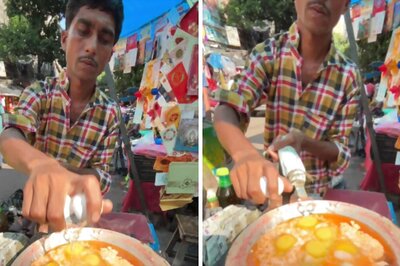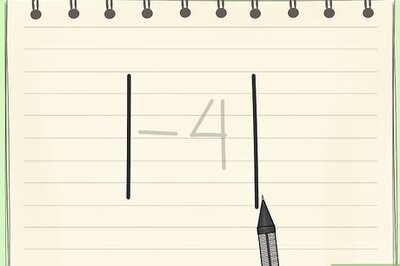
views
The evening bash of Britishers on the premises of the Viper Jail, the ruthless execution of the freedom fighters, the prisoners performing the laborious task of oil extraction in the traditional oil press - these scenes are vividly captured in S N Sreeprakash’s works. His 52 paintings were exhibited on the sidelines of the preview of ‘Mounathinte Nilavili’ (Scream of silence), the documentary directed by P D Santhosh. The documentary tells the tale of the Andaman prisons through the paintings which are done on screen by the artist, who is the only live character in the story. Giving a pictorial interpretation to the reel story indeed is a novel attempt and the artist has done full justice to it. Using water colour, acrylic and oil paint on canvas, the horrible reality of prison life gets unveiled. The works take you on a visual journey through the brutal reality inside the Cellular Jail of the Andamans -Kalapani- during the pre-independent era, when deaths were a regular affair. An attention grabbing piece on display has well portrayed the history of the cellular jail in three sections. The first being an abstract of the cellular jail, the second is about the souls of the dead prisoners departing from the gallows. The clothes flowing out of the prison stand for the possessions left by dead prisoners. There is the mute spectator, a banyan tree on the premises of the jail, represented in the third half with green leaves hanging above and dry leaves on the ground.To get a feel of the environs, both artist and the director made a visit to the place and painted some works there. An acrylic on canvas depicting the fall of the British and Japanese colonial powers is a remarkable one. “It rained while I was working on this work. Still, I did not stop and continued,” Sreeprakash says. On close observation, faded images of chains, chairs, and the flags of America and Japan appear on canvas. “Those faded images were visibly drawn first and then erased. The dwindling dominance of the foreign hands is symbolised there”, he adds. The artist did a thorough research before starting his work and some of the events he has captured can be scarcely found in the internet or history guides. “For instance, the painting in which the ‘sacred thread’ (poonool) of Ram Rakha Pandit is cut by jailer David Barry is my own creation. No reference was available on the their costumes or how they looked” says Sreeprakash. Some works can be called ‘collage’ as they are assemblage of several pieces of drawings. According to Sreeprakash, “It was difficult to transport huge canvas from Andaman by air. So separate pieces were later pasted together to make the complete work.” The artist who has been in Andaman for 25 years works with the Amalgamated Statistical Cadre there. The frames cover events beginning from the first war of Indian Independence to the Last Tribute.
















Comments
0 comment